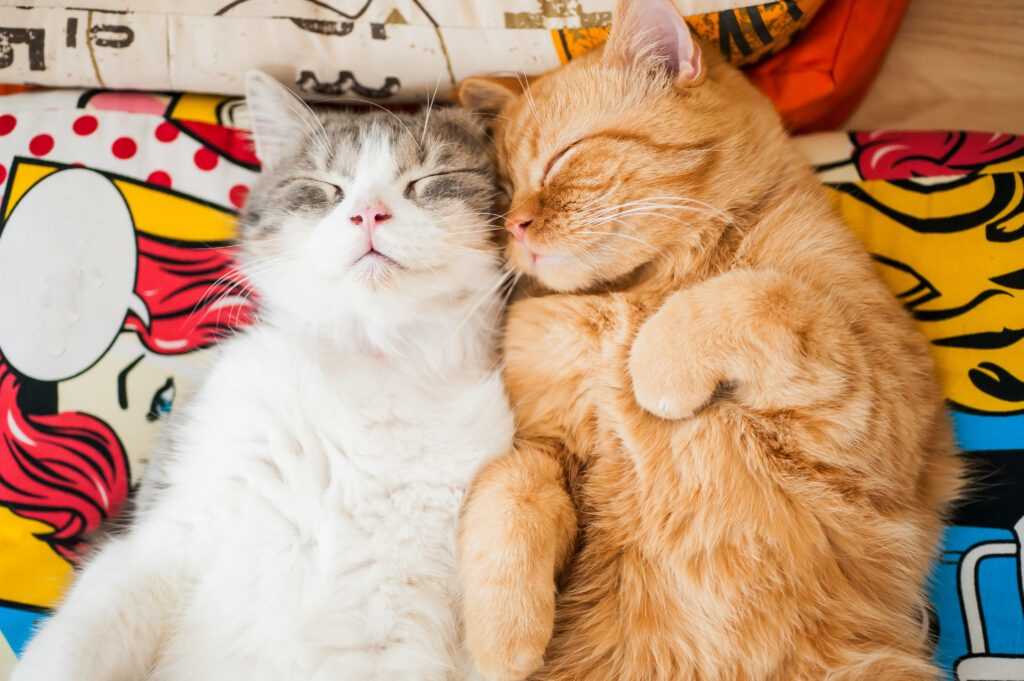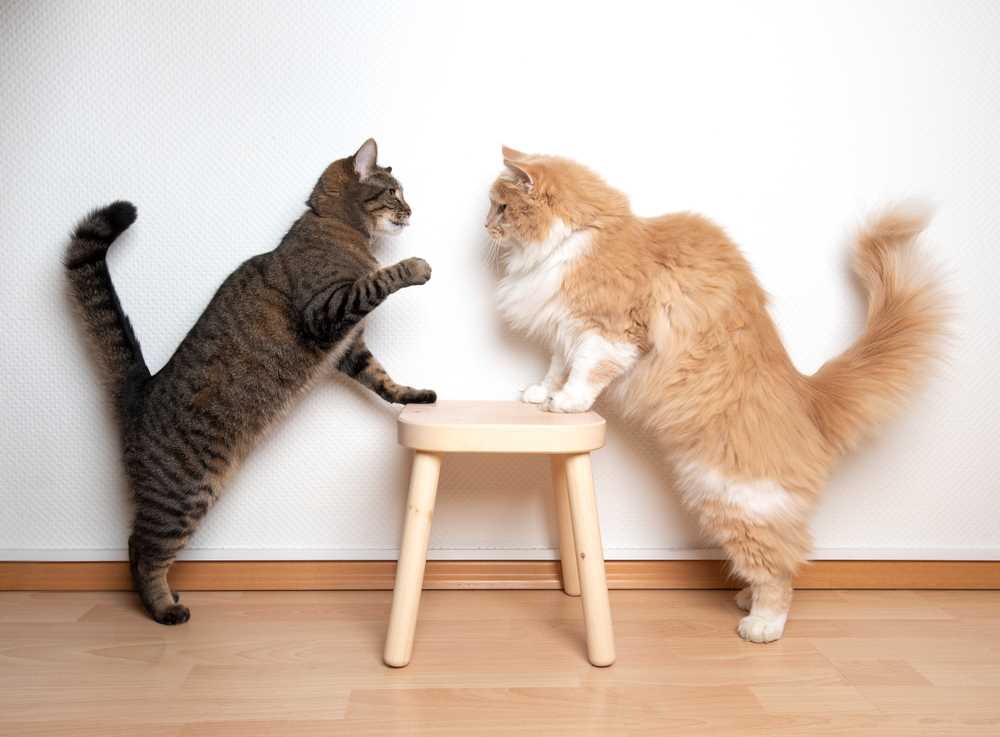



If you notice persistent signs of stress in your feline friend, such as hissing, hiding, or loss of appetite, it may be time to reconsider the introduction process. Cats, like me, thrive on routine and stability. Sudden changes can lead to anxiety, which isn’t healthy for anyone involved.
Pay close attention to body language. A stiff posture, twitching tail, or flattened ears are clear indicators that your furry companion is uncomfortable. Ignoring these signals could harm their well-being and your relationship with them.
Consider the duration of the introduction phase. If weeks or even months pass without any improvement, it might be wise to pause. Forcing interactions can lead to long-term behavioral issues, making future introductions even more challenging.
Lastly, evaluate your resources. Introducing a new cat requires time, patience, and space. If your environment doesn’t support a smooth transition, it may be best to hold off until conditions improve. Your cat’s happiness should always be the priority.
When to Give Up on Introducing Cats
If things aren’t improving after several weeks, it’s time to reconsider your approach.
Here are key indicators that suggest it’s best to halt the attempts:
- Persistent aggression or fear: If one or both felines consistently show signs of distress, such as hissing, growling, or hiding, it’s a signal to stop.
- Health issues: Stress can lead to physical ailments. If either pet starts showing signs of illness, prioritize their well-being.
- Lack of progress: If there’s no positive change in behavior after multiple sessions, it may be time to recognize the incompatibility.
Alternative strategies can be more beneficial:
- Separate living spaces: Allow each feline their own territory to reduce stress.
- Gradual reintroduction: If needed in the future, consider a slower approach with controlled interactions.
- Consult a behaviorist: Seeking professional advice can provide tailored solutions.
Understanding that not all relationships will flourish is essential. Creating a harmonious environment for each animal is what matters most.
Identifying Signs of Stress in Your Feline Friends
Watch for changes in behavior, such as excessive hiding or avoiding interaction. If I suddenly prefer solitude over snuggles, something might be off. Vocalizations can also indicate discomfort; an increase in meowing or growling signals distress.
Body language speaks volumes. Look for a tucked tail, flattened ears, or dilated pupils. These signs suggest anxiety or fear. If my whiskers are pulled back and my body is tense, it’s time to assess the situation.
Changes in appetite can reveal stress. If I’m not interested in my favorite treats or skipping meals, it’s a red flag. Pay attention to my litter box habits too; if I’m avoiding it or showing signs of discomfort while using it, something’s not right.
Environmental factors can contribute significantly. Sudden loud noises, new pets, or even rearranged furniture might provoke stress. Ensure my space remains calm and familiar, and consider cozy spots like the best cat beds for older cats for a soothing retreat.
Engaging in interactive play can also help gauge my mood. If I’m less enthusiastic or refusing to play, it’s a sign that I might be feeling overwhelmed. Adjustments to my surroundings and routine can make a world of difference.
Recognizing Aggressive Behaviors and Their Implications
Pay close attention to the following behaviors that indicate aggression: hissing, growling, swatting, and puffed-up fur. These signs serve as clear warnings that a feline is feeling threatened or defensive.
It’s crucial to assess the context in which these behaviors occur. For instance, if one of us is cornered or feels trapped, aggression may be a response to fear rather than dominance. Understanding this can help determine whether intervention is necessary.
Here’s a breakdown of specific aggressive behaviors along with their potential implications:
| Behavior | Implications |
|---|---|
| Hissing | Indicates discomfort; a clear sign to back off. |
| Growling | Signals a strong warning; likely a precursor to further aggression. |
| Swatting | May be playful or a sign of annoyance; observe body language for clarification. |
| Puffed-up Fur | Sign of fear or aggression; a way to appear larger to a perceived threat. |
If aggression persists, it’s wise to reassess the situation. Continuous aggressive interactions could lead to serious injuries or long-term stress for all involved. Prioritize each individual’s safety and well-being by creating a calm environment where all can feel secure.
Ultimately, recognizing these behaviors can help in making informed decisions about future interactions. If aggression is a frequent occurrence, it may be time to reevaluate living arrangements or seek professional advice.
Assessing the Impact on Your Existing Pet’s Well-Being

Monitor your buddy’s reactions closely. Changes in behavior can signal stress or discomfort. Look for signs such as hiding, decreased appetite, or excessive grooming. These behaviors indicate that the introduction may be overwhelming.
Creating Safe Spaces
Provide areas where your current companion can retreat. This allows for a sense of security amidst the changes. High perches or separate rooms can help them feel safe and reduce anxiety.
Routine and Stability

Maintaining a consistent daily routine is key. Ensure feeding times, play sessions, and cuddle moments remain unchanged. Familiarity in their environment can alleviate stress during transitions. If you want to explore noise levels in your surroundings, consider researching are electric lawn mowers quiet to minimize disturbances.
Understanding the Role of Environmental Factors
Pay close attention to the surroundings when welcoming newcomers. Factors like space, hiding spots, and vertical territories can significantly influence interactions.
Here’s what I’ve observed:
- Space: Ample room allows each feline to establish personal zones. Crowded areas can escalate tension and anxiety.
- Hiding Places: Access to safe retreats fosters comfort. Cats often feel safer when they can escape to a quiet nook.
- Vertical Opportunities: Cat trees and shelves offer elevated spots for observation. This can ease territorial disputes as it creates a sense of security.
Monitor changes in the environment, as they can lead to behavioral shifts. New furniture or scents might trigger unease, prompting reconsideration of social dynamics.
Consider daily routines and how they impact the mood of each feline. Consistency in feeding, playtime, and interactions helps reduce stress levels.
Finally, observe how each individual responds to stimuli in their habitat. Some may thrive amidst chaos, while others prefer tranquility. Tailoring the environment to suit their preferences can make a significant difference.
Consulting with Professionals: When It’s Necessary
Seeking guidance from a veterinarian or animal behaviorist is a smart move if tensions between furry friends escalate beyond manageable levels. Professionals can evaluate the situation objectively, providing insights that aren’t always visible to us. They can identify underlying health issues that might contribute to aggression or stress, ensuring every feline is in tip-top shape.
Behavioral Assessments
A detailed behavioral assessment by an expert can pinpoint specific triggers and suggest tailored strategies to promote harmony. Techniques may include gradual desensitization or environmental modifications to ease anxiety. This professional input can be invaluable, particularly if one of us is displaying signs of distress or if interactions reach a concerning threshold.
Health Checks
Regular health check-ups are important too. Illness can turn even the sweetest kitty into a grouch. If a companion suddenly becomes hostile or withdrawn, a vet visit can rule out medical issues that might necessitate a pause in social interactions. Understanding health dynamics is key to maintaining a peaceful household.








